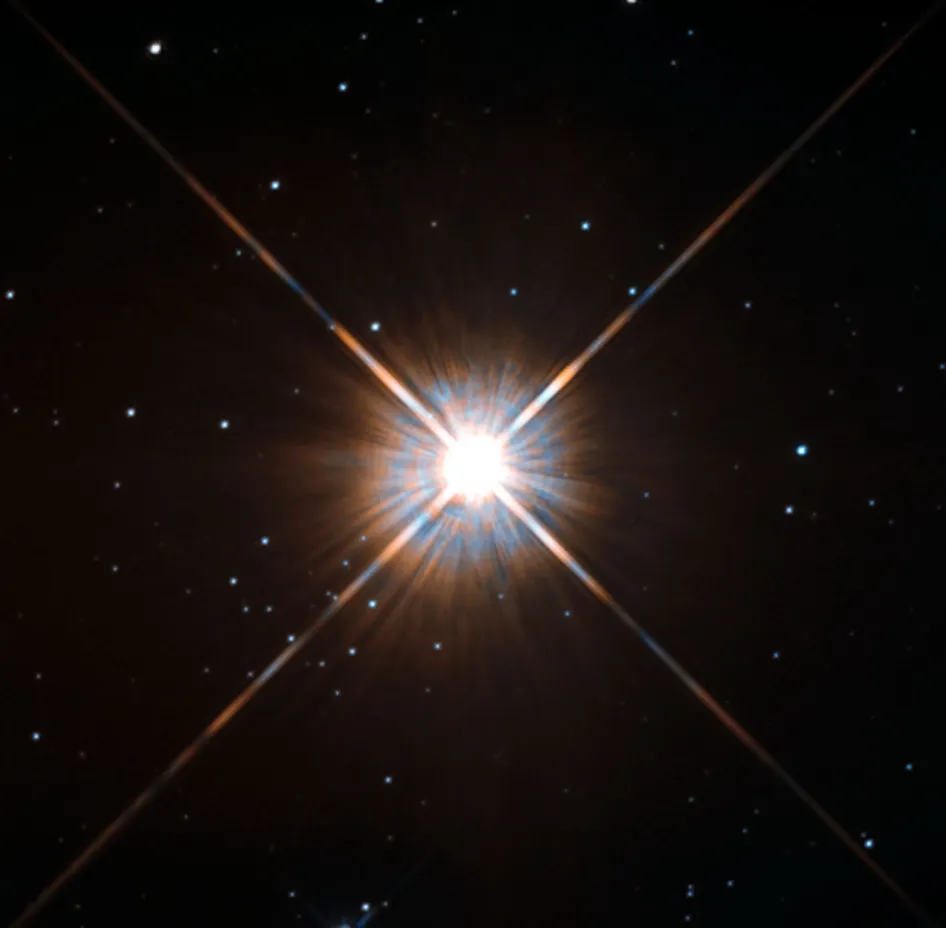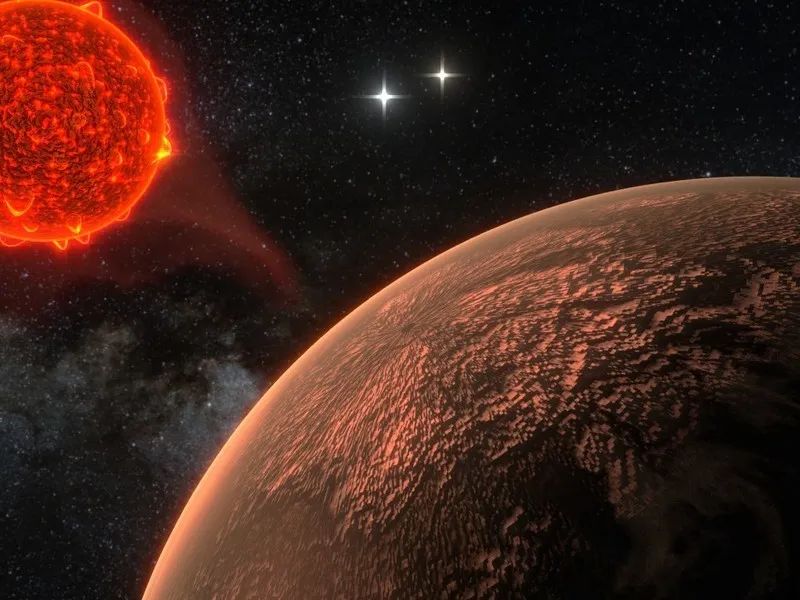Shining brightly in this Hubble image is our closest stellar neighbor: Proxima Centauri.

Proxima Centauri is a red dwarf, a small low-mass star, about 4.25 (40 trillion km) light-years from the Sun in the constellation of Centaurus. It was discovered in 1915 by the Scottish astronomer Robert Innes. Although it looks bright through the eye of Hubble, as you might expect from the nearest star to the Solar System, Proxima Centauri is not visible to the naked eye. Its average luminosity is very low, and it is quite small compared to other stars, at only about an eighth of the mass of the sun.
Proxima Centauri b is the closest planet to Earth out of the Solar system and it is right in the habitable zone

Proxima Centauri b orbits the star at a distance 0.05 AU (7,500,000 km) with an orbital period of approximately 11.2 Earth days, and has an estimated mass of at least 1.3 times that of the Earth. Its habitability has not been established, though it is unlikely to be habitable since the planet is subject to stellar wind pressures of more than 2,000 times those experienced by Earth from the solar wind